thedevilplayshouse
146 posts
we were the sum of our desires and this was saving us
Don't wanna be here? Send us removal request.
Text
"He looked like a boy, masquerading as a gentleman": A meta on Amadeo, Venice, The Picture of Dorian Gray, and standing on the cusp of adulthood
TW: Discussions of SA, underage SA, human trafficking, slavery, and NSFW content
From a historical perspective, Armand's life as a teenage enslaved boy in Venice in the early 16th century gives us a chance to discuss the culture of male-male attraction in Venice during this period, specifically the contemporary understanding that older men could be attracted to young boys. This historical grounding can, in turn, offer insight into why Armand is trapped on the cusp of adulthood, how this manifests itself in his physicality, and how his story can be cautiously and sensitively used as a mirror for the real experiences of enslaved people in Venice during this period. I will be referring to him by his birth name (Arun), the name Marius gave him (Amadeo), and the name the Children of Darkness coven gave him (Armand), where appropriate.
In 1496 in Venice, illegal sexual relations between young boys and older men were so prevalent that 'special patrols [went] searching for boys who were patientes (sc. passive partners), monitoring schools for fencing, dance and song, where youths might be found in the evenings, and once again looking for companions of unequal age.'[1] This was roughly 27 years before Arun was purchased from a brothel by the vampire Marius de Romanus. Due to Armand's fractured memories of this period, it isn't clear when he was forcibly trafficked to Italy, but it is likely that he was bought by Marius in around 1523 at the age of 15 (assuming he was born in 1508, given that he says he's 514 in 2022).
As a physically attractive enslaved boy, Amadeo would have been understood as an object of desire ("object" in a literal sense, with no personhood of his own) to the older men around him. In his recent study Forbidden Desire in Early Modern Europe: Male–Male Sexual Relations, 1400–1750, historian Noel Malcolm discusses the contemporary evidence for the attraction of men towards adolescent boys. Malcolm explains that older men desiring teenage boys was a common and accepted part of Venetian culture, provided one did not act on those desires, and that attractive young men were often described similarly to women in surviving sources and contemporary literature.[2]
The important thing to note here is that teenagers were supposed to be desired before they started to show signs of maturity, when they could almost be considered sexless. As Malcolm writes, when 'a young man's looks became properly masculine (with facial hair, developed musculature, etc.), that is, fully differentiated from a feminine appearance, was precisely the time when he ceased to be seen as desirable by the great majority of older men.'[3] Due to poor nutrition, this might have occurred later for teenagers in the 16th century than it does today, but it was usually between the ages of 17 and 23.[4] Given that Amadeo was an enslaved child, and therefore probably not well-fed, he was likely late to develop. Putting aside the fact that in the books Armand is 17 when he's turned, Queen of the Damned offers some evidence for this:
'Did Daniel know that Armand had been a boy when all this had begun for him? Seventeen years old, and in those times that was young, very young. Seventeen-year-old boys in the twentieth century were virtual monsters; they had beards, hair on their chests, and yet they were children. Not then. Yet children worked as if they were men.'[5]
In light of this, it is worth mentioning that Armand has the slightest hint of facial hair. You can see this clearly in close-up shots, for instance these ones in my gifset. Here's one clear example:

With his long hair, his high cheekbones, and his thin frame, Amadeo would have fit perfectly into the feminine, feminised, youthful archetype that Malcolm describes. It would have been socially acceptable for older men to be attracted to him in Venice in the 16th century. According to Malcolm, 'When early modern writers described good-looking boys, the terms they used were drawn from a standard repertoire that existed primarily to describe female beauty: coral lips, pearly teeth, ivory skin, and so on.'[6]
Obviously, the last point doesn't apply to Amadeo. Instead, he would have been desired because he was exoticized by the Italian network of artists that Marius "donated" him to (that is to say, his Otherness would have been sexualised, as a young boy possibly from Bengal as @depressedraisin suggested here). This exoticization is apparent in how Amadeo is portrayed in The Adoration of the Shepherds — kneeling, enraptured, with a look of subservient wonder on his face. (For an incredible meta which delves more deeply into this aspect of Armand's history, I recommend reading "Armand, colonialism, and the weaponisation of anti-Blackness" by @shesnake.)
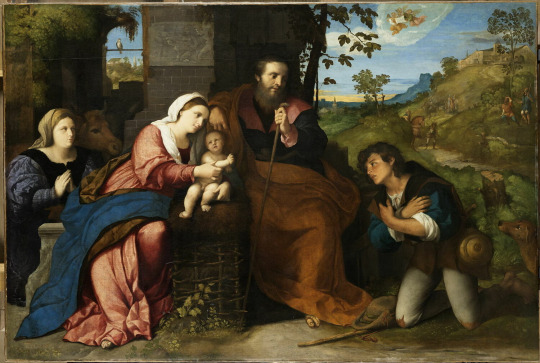
If we assume (besides his obviously lightened skin), that The Adoration is a fairly accurate portrayal of Amadeo at 20 years old, then the main difference between him at 20 and him at 27 is his slight facial hair. As discussed previously, the appearance of facial hair was a marker for young boys growing out of their desirability and into adulthood. Turned at 27, Armand is now stuck in this liminal space between boyhood and adulthood, and this is visibly apparent in his facial hair. His youth is mentioned in the show on a few occasions. When Louis first sees Armand in 2.01, he says that he 'looked like a boy, masquerading as a gentleman'. Madeline calls him 'young man' in a patronising tone in 2.06.
Interestingly, Armand's youth is mentioned more often than his race, though in the 18th-century flashback in 2.03, Nicolas asks Lestat, 'do you know this gypsy?' This is the only microaggression we've seen Armand face so far, but it offers a tiny glimpse into the kinds of comments that Armand will have faced for his entire life, both as a human and as a vampire. Obviously, Armand is not Romani, so the racial slur of "gypsy" does not apply to him (not that it applies in any context, but I mean it's literally inaccurate). However, this erasure of origins is common in contemporary historical references to people of colour. As historian Imtiaz Habib writes in Black Lives in the English Archives, 1500-1677: Imprints of the Invisible, Black people were often referenced in early modern sources using 'cryptic citations', referred to interchangeably as '"blackamore", "moor", "barberee", "barbaryen", "Ethiopian", and "Indian".'[7] Regardless of their country of origin, they were lumped together as one people.
In this way, Armand's lost origins could be seen as a representation for the surviving fragmentary evidence for people of colour from across the globe in English archival sources. He himself describes his memories in 2.04 as "fragments". This may be read as a metaphor for the sparse and fragmentary surviving archival evidence for enslaved people's experiences in the early 16th century, especially enslaved children. Where the evidence does survive, it is limited, and enslaved people's stories are usually recounted through the lenses of their white owners or observers, with their own voices lost to history.
There is another aspect of Armand's life which may be mirrored with the life of a real specific enslaved person. In Contested Subjecthood: Runaway Slaves in Early Modern Venice, historian E. Natalie Rothman recounts the story of Omar, an enslaved boy from Zara, living in 17th century Venice, who was given the name Pierantonio by his enslaver.[8] He had a long history of service since childhood, and had been baptised in 1648 when he was 10 years old, and, at the age of 32, was seeking permission to be married. Rothman writes that Omar's story:
'suggests ways in which enslavement as a child could actually facilitate effective forms of social, as well as spatial mobility, while curtailing others. His long years of service as a baptized slave were eventually rewarded by formal manumission [release from slavery], the acquisition of a trade, and insertion into a network of patronage that secured his ability to forge new kinship ties in Venice.'[9]
Likewise, it was Amadeo's long and loyal service to Marius, since childhood, which ultimately allowed him to become a vampire ('facilitate effective forms of social, as well as spatial mobility'). If Amadeo had not been Marius' property for as long as he was, if he had not had "skill", as he puts it, then Marius would not have shared the Dark Gift with him. It might be a slightly clumsy comparison, but vampirism could be seen as what Rothman describes — the reward of a trade and new kinship ties. However, though he had been rewarded, Amadeo was not yet freed from his service to Marius. He was now frozen in that place between boyhood and adulthood, having not quite lost what made him special to Marius, but not being the same boy he was.
Finally, this liminal state is manifested not only in his slight facial hair, his long hair, and his youthful features, but it is also realised in The Adoration. I made a gifset overlaying a quote from The Picture of Dorian Gray by Oscar Wilde with scenes of Armand looking at his portrait, which is relevant in this discussion. Armand is almost Dorian Gray in reverse. He might have lived for five centuries, but he a part of his soul is still trapped in that portrait, in a position of unwilling subservience. The fate Dorian Gray laments has happened to Armand. He has grown older, and taken on the countless sins of his vampiric life, but his picture has remained the same — frozen in servitude, representing that young boy who was adored for his beauty.
Bibliography
1. Noel Malcolm, Forbidden Desire in Early Modern Europe: Male–Male Sexual Relations, 1400–1750 (University of Oxford, 2024) p. 44. 2. Ibid., pp. 179-81. 3. Ibid., p. 180. 4. Ibid., pp. 46-7. 5. Anne Rice, Queen of the Damned (Warner Books, 1996) p. 102. 6. Malcolm, Forbidden Desire, p. 179. 7. Imtiaz Habib, Black Lives in the English Archives, 1500-1677: Imprints of the Invisible (Taylor & Francis Group, 2007) p. 2. 8. E. Natalie Rothman, Contested Subjecthood: Runaway Slaves in Early Modern Venice, Quaderni storici, NUOVA SERIE, Vol. 47, No. 140 (2), Riscatto, scambio, fuga (AGOSTO 2012), pp. 425-6. 9. Ibid., pp. 426-7.
215 notes
·
View notes
Text
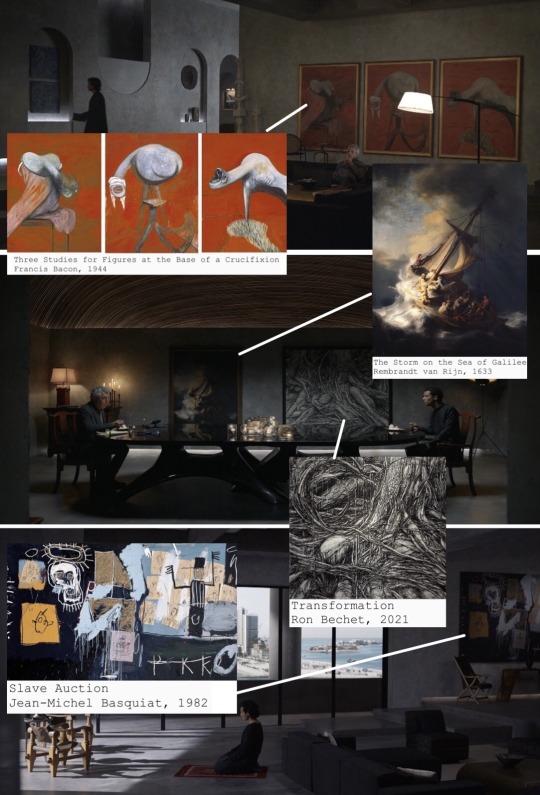
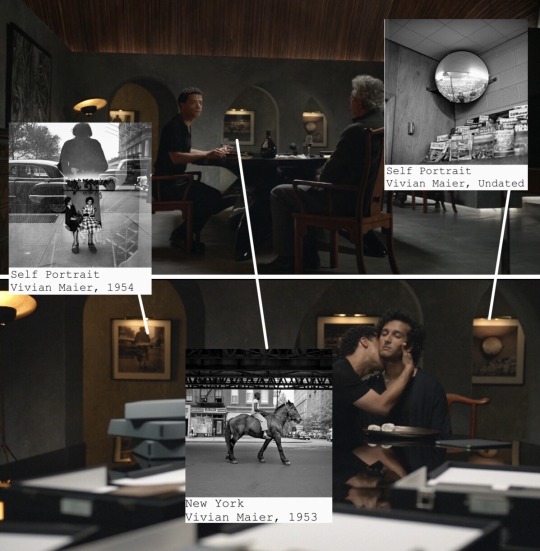
Dubai penthouse + artwork
AMC’s Interview With the Vampire, set design by Mara LePere-Schloop, set decor by Selina van den Brink.
List:
Francis Bacon, Three Studies for Figures at the Base of a Crucifixion (1944)
Rembrandt Van Rijn, The Storm on the Sea of Galilee (1633)
Ron Bechet, Transformation (2021)
Jean-Michel Basquiat, Slave Auction (1982)
Vivian Maier, Self Portrait (1954)
Vivian Maier, New York (1953)
Vivian Maier, Self Portrait (Undated)
(1132 Rue Royale edition)
1K notes
·
View notes
Text
the reason i need the weirdo armand who blends drinks based on nothing but colour and feeds garbage disposals and makes weird home movies in the show is because as much as i talk about armand and the cycles of amadeo and marius they're like...the ultimate proof that he is not what anyone has tried to make him. he's not an eternal sex slave or child bride or cult leader or abusive figure. he tries to be all these things because they're how he experienced the world in his most formative years but at the end of the day he has a big heart and he wants to be loved and he wants to experience the world as it is and he wants to watch the same movie over and over again and he wants to protect those he cares about and he wants to ride jet skis and he wants to make a human boy coffee in the mornings and he wants to build a terrible consumerist island and and he wants to be a good father and
307 notes
·
View notes
Text


















He didn't witness the play! He directed the play!
135 notes
·
View notes
Text
“what if Alice looks like Armand” what if Alice is a skinny pale as paper light eyed girl? what if Daniel chooses a woman who looks like the romantic ideal they painted over Amadeo for? you chase after white men who are fascinated by you for a minute, by how exotic and otherworldly you are, but then suddenly you are nothing but your powers and that too is eventually boring. so they leave you. they will always leave you. in the end, she is white and pretty and lovely. she gets to have Daniel and his pale baby girls. and you get nothing but the pain.
64 notes
·
View notes
Text

I was getting a bit of a headache today so I drew a bebe.
Arun enjoying his day .
696 notes
·
View notes
Text
so much of what iwtv is trying to say about the cycle of abuse is perfectly encapsulated in amadeo and marius’ relationship as the catalyst for the events of the story. ownership as reinforced by white supremacy & incestuous power dynamics as it develops into codependent “love” reverberates throughout every relationship armand and marius have a hand in crafting afterwards.
marius (a white supremacist) abuses amadeo (a colonial subject) —> marius “dies” and amadeo becomes armand, armand finds lestat and projects marius onto him and tries to claim ownership over him in the way that he understands love —> lestat runs away from him and finds marius who directs him on how to create a “proper family” leading to his abuse and white supremacist isolation of louis —> louis runs away and finds armand but marius and lestat (who was given his understanding of companionship by marius) have distorted their understanding of intimacy so badly they don’t understand how to proceed and both mimic the behavior of their makers (with armand eventually taking over the controlling position which was inevitable when you consider loumand as maristat which in and of itself had an obvious power dynamic) —> (in the books) armand leaves louis and finds daniel and has been fully actualized as a marius-type figure —> marius returns and can assert he is the “true” marius and that armand has been awkwardly pretending at his role. he becomes the puppeteer of armand lestat and daniel (including entering a companionship with daniel where daniel is completely brain broken because of what armand did to him, creating the perfect abusive relationship vacuum for marius) because their entire centuries long push and pull dynamic was written out 500 years ago. the brutality inflicted onto amadeo by marius has a ripple effect on the entire narrative. I joke that “everyone is amadeo forever” but there seems to be a deliberate construction of “amadeo” and “marius” as *concepts* explored through the power dynamics in every relationship, and the ones in which there’s two marius’ or two amadeos (aka a power struggle that is not easily decided) struggle to maintain themselves without the subjugation all of these characters understand as intrinsic to love. food for thought!!
188 notes
·
View notes
Text
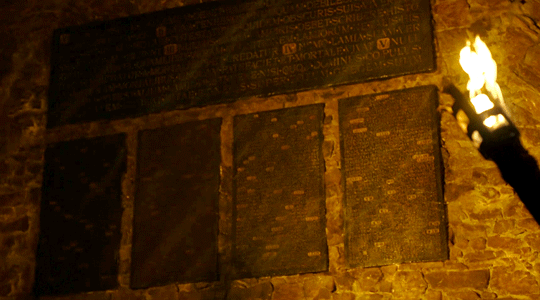
The Vampire Laws (according to the Children of Darkness).
Total of one hundred.
Written in Latin. The main coven was based in Rome, and Armand was sent from there to Paris. Is Latin his third language? ("French my fourth and poorest language").
They largely use the term "lamiae" for vampires (which makes sense given the part of the world), but not always.
The Five Great Laws
1. Quisque suum thalamum debet habere ducem e ... ponat ... doli.
(my translation) Each coven (literally „inner room“) must have its leader ... order ... Trick.
(used in the show) Each coven must have its leader and only he might order the working of the Dark Trick upon a mortal.
2. Dona tenebrosa numquam debilesdebile.. ... er.. aut iis qui necum potestatibus quidem obscuris suis vivere possunt debent.
The Dark Gifts must never be given to the weak ... or to those who cannot (in fact) live with their dark powers.
The Dark Gifts must never be given to the crippled, the maimed or to children.
3. Nullus lamia vampiris debet scribere historiam lamiae vel quamlibet veram cognitionem lamiorum netalis historia inveniatura mortalibus et credatur.
No vampire should commit to writing the history of the vampires, or any true knowledge of vampires, lest such a story be discovered and believed by mortals.
No vampire must commit to writing the history of the vampires.
4. Nemo lamia suamveram naturammortalibus unquam patefaciet et mortale vivat.
No vampire will ever reveal his true nature to mortals and lives as a mortal.
No vampire shall ever reveal his or her true nature to a mortal and let the mortal live.
5. Nullus lamia potestalium lamia destruere nisi quod dominus copuluspotestatemhabetvitae et necis super totum gregem suum.
No vampire can destroy another vampire except for the coven master who holds the power of life and death over his whole flock.
No vampire may ever destroy another vampire except that the coven master has the power of life and death over all his flock.
Other laws that are at least a little bit readable:
51. Lamia semper ad sep... re...bit vel uni simillimum.
A vampire is always ... or very similar to one.
52. Lamia non cognoscet gaudium.
A vampire will not know joy.
53. Non cognoscet lamia felicitatem.
A vampire will not know happiness.
54. Leges magnae lamiae ...olasse iudicatus exs... ... morte punietur.
The laws of the great vampire* ... judged ... will be punished by death.
*or more likely the great laws of the vampires.
55. Lamia(e) exilia punienda ...buntur in terra tumulanda.
Exiled vampires to be punished ... buried in the ground.
56. Lamia non ambulabit in locis lucis.
A vampire will not walk in places of light.
57. Vampires praedam e consortio rapient ...s profuxis[?] et vagi.
Vampires will snatch prey from the group ... runaways and vagrants.
58. Lamia nunquam cognoscet delicias vitae vanitates saeculi.
A vampire will never know the pleasures of life and the vanities of the world/age.
59. Lamia non requiret solatium foci[?].
A vampire will not require the comfort of a family.
60. Vampires nunquam carnalem delectationem cum mortalibus requirent.
Vampires will never seek carnal pleasure with mortals.
61. Vampires nunquam mortalium consortia quaerunt.
Vampires never seek the company of mortals.
62. Vivere inter homines ....nt labentibus annis lamia ad insaniam.
To live among humans .... the passing years ... a vampire to madness.
63. Vivere inter homines alios videre senescere ac mori sicut lamia nunquam sequila[?] lamia ad insaniam impellet.
To live among humans and see others grow old and die, like vampires would never, will drive vampires to insanity.
64. Lamia non ....patem quaerunt.
A vampire not ... seek.
65. Vampires in choro[?] delectationem non reg...rent.
Vampires do not ... delight in dance.
66. Vampires in musica non quaerunt ....tem.
Vampires do not seek .... in music.
67. Lamia(e) non[?] actibus[?] delectationem quaerunt,
Vampires do not seek pleasure in perfomances.
68. Vampires litterae** voluptatem non requirent.
Vampires do not seek pleasure in books.
**thank you lilium-in-blue
69. Vampires magicae non ....ionem requirent.
Vampires do not seek .... magic.
81. Factor amittit fac....diendi f.lli sui cogitationes ..c ...tium est donum obscurae largi...
The maker loses .... his thoughts ... is Dark Gift ...
82. Lamia in alias formas inc..sa europaea mutare poterit sed numquam in ...rundom africanum vertere poteris.
A vampire in other forms ... European ... will be able to change but never in ... African ... will be able to turn.***
*** I have no idea what this means. Words are missing and the whole sentence can have a completely different meaning than what it looks like now. My first thought was that it was some kind of reference to Akasha and Enkil. Please don't jump to conclusions.
83. Veri filii dei potestatibus eam ...per fidem resistere possunt s.... ....e sunt creaturae infidelis damnatorum.
True children of God .... powers ... can resist faith ... are the creatures ... damned unfaithful.
84. Lamia corpora aquae salsae in aestus maximo et infimo .a.tum transibunt.
A vampire will cross bodies of salt water ... at high and low tides.
85. Ut tempus mortale depopulatur corpus lamia depopulabitur tempus ut anni decennia vertuntur in saecula millennii corpus petrificat et lamia volvitur in saxum.
As time destroys the mortal body, so the vampire will be destroyed over time, as the decades turn into the centuries of the millennium, the body petrifies and the vampire turns to stone.
86. Vampires victimas non relinquent ubi a mortalibus cognosci possint nisi tales dolores fuerint ut mors non sit causa praeternaturalia.
Vampires will not leave their victims where they can be recognized by mortals unless they are wounded in such a way that their death does not seem supernatural.
87. Lamia vera loquetur scobe[?] domino.
The vampire will speak the truth ... to the master.
88. Lamia domino suo asse obediet eique exhibebit quantum tale officium postulat.
A vampire will obey his master and will give him as much as such a duty demands.
89. Lamia ad omnes casus paretur.
A vampire is prepared for everything.
90. Lamia paratus ad immolandum se ad bonum testudinis.
A vampire is willing to sacrifice himself/herself for the good of the coven.
91. Paratus lamia paratus erit suum testudinum et dominum suum ab omnibusiminis externis et domesticis defendere.
A prepared vampire will be ready to defend his/her coven and his/her master from external and internal threats.
92. Super omnia custodiatte.
Above all, be vigilant.
93. Nullam lamia eg... posuere eget t.n.idunt quam.
No vampire ... needs to put ...
94. Si lamia in...niret socium lamia fractam testudinis regulas tali de..sta domino cousco referentur.
If a vampire ... vampire breaks the rules of the coven, such ... they will be reported to the coven master.
95. Defectum de .ae...is membris certi... facere faciet ..os criminum facitos[?] lamia ac s ... .a... miserit.
The failure of ... members ... will make ... crimes ... vampire ... will be killed/released.
96. Ignorantia testament.. regulae non erit acceptabile defensionem contra regulas praevaricationis.
Ignorance ... of the rules will not be an acceptable defense against breaking the rules.
97. Admissa in cr..am un ... via exeundi ...
Admitted ... way ... avoid ...
98. Pactum lamia s... et pacem[?] praesedit.
A vampire pact ... and presides over peace.
TL;DR: Very cult-like rules, calling for restraint, moderation, obedience. Lots of little callbacks.
Let me know if you spot any mistakes or can add anything. I'm used to translating from Latin, but not into English. Latin is a bit tricky, mainly because of the crazy word order.
939 notes
·
View notes
Text

Im fucking crying marius needs to bash the east in every other breath or he WILL DIE
0 notes
Text
half of daniel's memoir being covered with static thats wiping away/obscuring the full picture is sooooo fucking delicious i love it

2K notes
·
View notes
Text




“He hates him. He’s frightened of him. He loves him. He wants to touch him. He wants to run away from him. All of those things are true, and actually that level of fear probably does draw those things out of you as well. You’re just completely bare. Maybe a smile creeps out.” — Jacob Anderson
2K notes
·
View notes
Text
crazy that in the books lestat and louis are slave owners and armand is a former child slave who seduces them both and ruins their lives. and they just never talk about this
970 notes
·
View notes
Text
people downplaying armand's role in the lynching trial drives me insane because the iwtv writer's room consists almost entirely of playwrights so when the show frames armand as a director like explicitly the director they mean the theatrical production including the tendon cutting the physical silencing the mishandling of claudia's diaries that was armand executing his creative vision from start to finish. yet when i say i want to drown armand in a shallow pond i'm the bad guy
301 notes
·
View notes
Text


IWTV S1 Ep4 | S2 Ep8
"Been enduring here?"
1K notes
·
View notes
Text
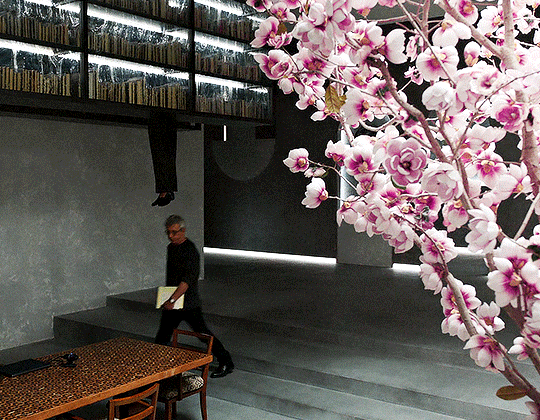
this scene always haunts me. the quiet intimacy. existing side by side, no one else around. the tension that they must feel at this point, the excitement of seeking one another out; armand going where he can hear daniel plans to be, daniel going where he knows armand will be eventually. like magnets, they're drawn in towards one another. it was never about the interview.
501 notes
·
View notes

